
What can cause uneven tyre wear?
Agricultural tyres: What can cause uneven tyre wear?
SUMMARY:
How can I check for uneven tyre wear?
There are no wear indicators on agricultural tyres, but it is possible to check for uneven tyre wear. This can be done by taking a step back and looking at your tyres from the front. This way, you can see if any parts of your tyres are subject to more pronounced wear.
You can also check tyre wear levels by measuring the depth between the top of two adjacent lugs on one edge of the tyre and the bottom of the tread with a tyre tread depth gauge. Do the same on the other edge of the tyre. If you notice a difference in depth between the left and right sides of the tread, your tyre is wearing unevenly.
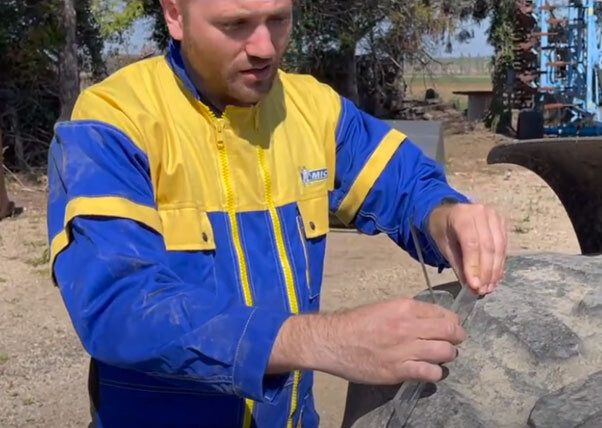
how to check for uneven tyre wear
Why do my farm tyres wear badly?
There are several types of uneven tyre wear. Here are the 4 main causes, discover more by clicking on the links:
1 - Incorrect pressure
Uneven tyre wear can be caused by over-inflation or under-inflation. Make sure you inflate your tyres to the correct pressure to avoid these problems.
Over-inflation
If the tyre is over-inflated, it is the central part of the tread that is likely to wear prematurely, as the tyre will be bulging.
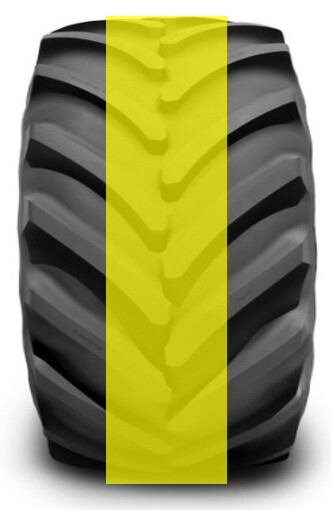
Over inflation of farm tyres
Under-inflation
If it is under-inflated, however, it will sag and tend to wear prematurely on the shoulders.
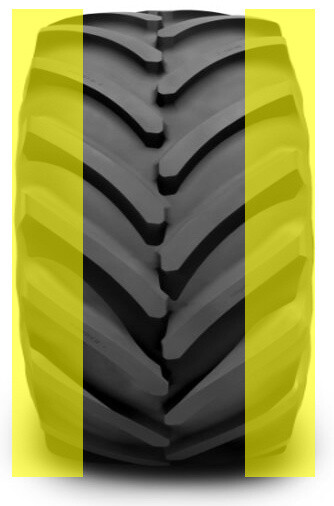
Under inflation of farm tyres
Severity of wear

severite usure
2 - The roadside effect
The roads are not completely flat, but generally a little curved. If you use the road with your tractor, you drive on one side only if it is two-way.
As a result, in countries where people drive on the left-hand side of the road, wear will be more pronounced on the left-hand tyres. Conversely, in countries where people drive on the right, wear will be more pronounced on the right-hand tyres.
A simple solution is to swap left/right tyres when you see the beginning of lateral wear.
3 - Misalignment of the trailer axles
If your machine is towing a trailer with axles that are not aligned properly, this can cause drift wear on the tractor tyres, on both the front and rear tyres.
If drift wear occurs on the right half of the front right tyre, it will affect the right half of the front left tyre too. Both tyres will therefore be worn prematurely on the same side.
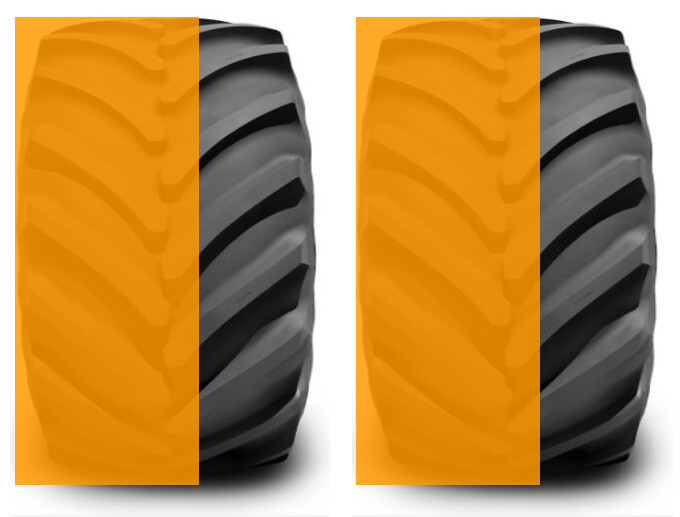
Drift wear same side
Severity of wear

severite usure
4 - A geometry problem
Geometry concerns the parallelism and camber of your farm machinery. Either can be out of adjustment. Let's take a closer look at why this can lead to uneven wear.
-
Parallelism
The front axle of a tractor is directional and is often subject to various stresses. For example, when ploughing in the field, the tyre in the furrow is put under more stress, which can cause the front axle to go out of allignment.
It should also be pointed out that a misalignment does not necessarily concern old tractors. The factory alignment may not be appropriate for the local use of the vehicle. A shift of just a few millimetres can cause uneven tyre wear.
There are two main types of parallelism-related misalignment:
Toe-IN misalignment
The two front tyres are turned slightly towards each other, which tends to wear the outer part of their treads.
Seen from above, they look like this:
REAR
\—/
FRONT
If we add to this the roadside effect we mentioned earlier, the wear will be even more pronounced on the tyre running close to the edge of the road.

toe in misalignment
Severity of wear

severite usure
Toe-OUT misalignment
In the case of toe-out misalignment, the two front tyres are turned slightly outwards.
Seen from above, they look like this:
REAR
/—\
FRONT
As a result, there is a more pronounced wear on the inner half of the tread for both tyres.
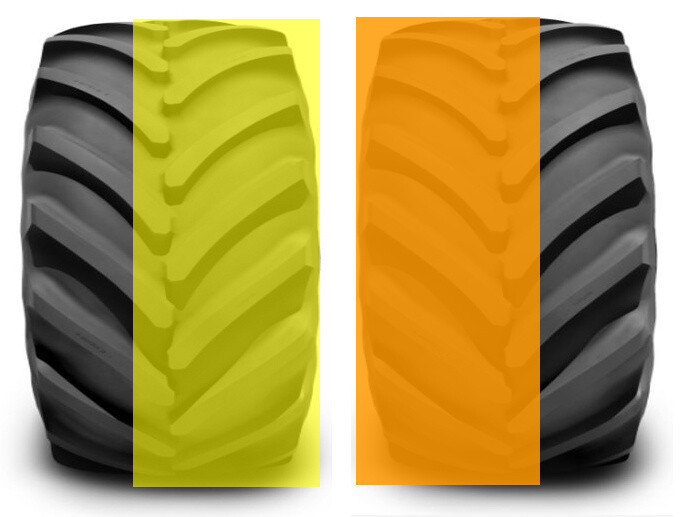
Toe out misalignment
Severity of wear

severite usure
-
Camber
Positive camber
Positive camber means that the upper part of the front tyres is further apart than the lower part. Tyre wear, in this case, will predominate on the outer lugs.
Viewed from the front, the tyres look like this:
TOP
\—/
BOTTOM
Negative camber
Negative camber is exactly the opposite. The parts of the tyres that touch the ground are further apart than the tops. In this case, tyre wear will be more pronounced on the inner lugs.
Viewed from the front, the tyres look like this:
TOP
/—\
BOTTOM
Other agricultural machinery concerned
It should be noted that tyre wear due to a mechanical misalignment can affect agricultural machinery as well as tractors:
- On trailers, uneven tyre wear related to parallelism or misalignment between axles can occur.
- On harvesters, wear related to parallelism or camber can affect the rear tyres.
- Articulated harvesting machines may be subject to misalignment and therefore to uneven tyre wear.
- Sprayers may show uneven tyre wear due to parallelism, misalignment or camber.
If in doubt, we advise you to contact a professional who can check your parallelism and camber using specialised measuring tools.
And if it's time to replace your tyres, check out our ranges specially designed for your use:
Other articles to find out more:
Need more advice? Discover our tyre damage and wear guide




